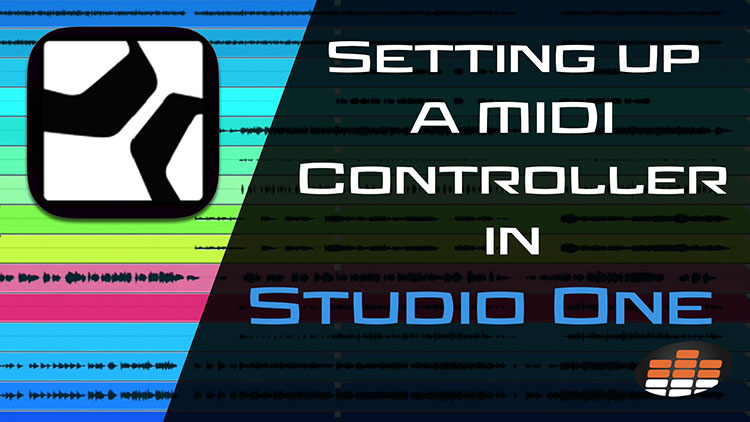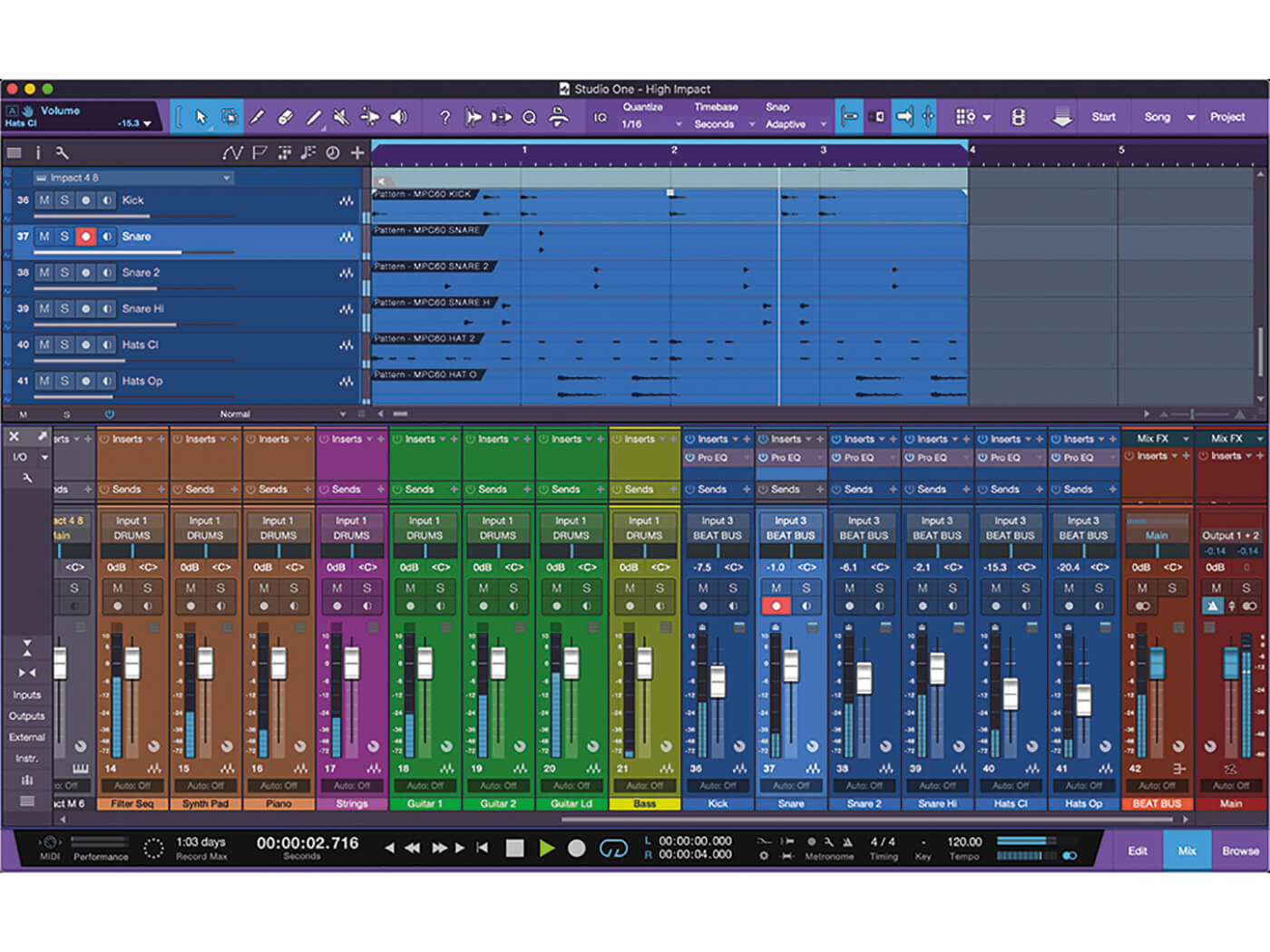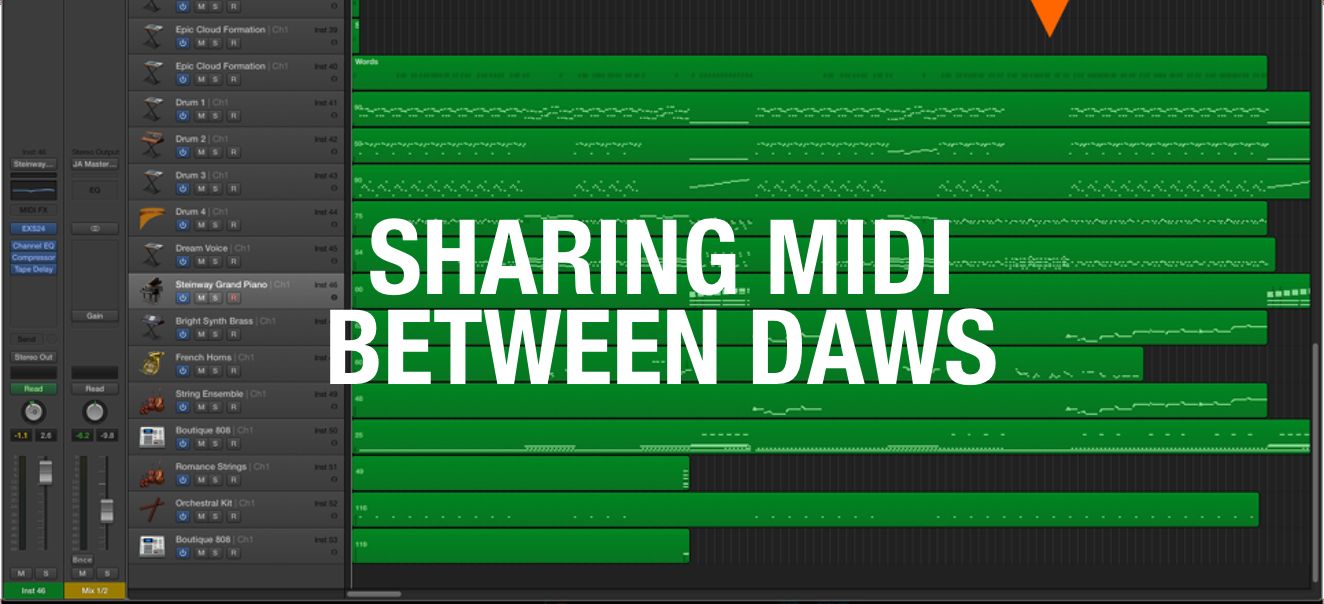To record MIDI in Studio One, you should first have setup your audio interface, and your MIDI input device. If you need help with that, Call OBEDIA to get one-on-one help with device setup. After having done this, you’ll proceed to recording MIDI in Studio One Start by setting up a new instrument track from the add new tracks dialog box. Had this problem moving MIDI tempo maps from cakewalk into Ableton Live 9. My solution was to save the Project as 'MIDI type 1' which is a universal format that will include tempo maps to be imported. The process is a tad buggy and sometimes imports random tempo fluctuations, but for the most part it works. MIDI input support; Audio expansions supported: VRC6, VRC7, FDS, MMC5, Namco 163 & Sunsoft S5B. Windows, MacOS and Linux versions. Latest Release Hotfixes in 2.2.1. Fixed import of slide notes from FamiStudio Text format. Added option to not trim unused data when exporting to FamiStudio Text format. Fixed crash when exporting to some formats. Go to Song, Import Song Data, and you’ll be asked to select another Studio One project from your hard drive. From there, you’re presented with a list of the elements in that project (tracks and instruments, insert effects, send effects, automation and more), which you can pick and choose between for flying into your currently loaded project. Apr 16, 2017 Import midi File I'm new to S1, and I can't figure out how to import midi files or tempo maps from Cubase Pro Any thoughts.I've looked at the manual and did a search, but I could not find any info on how to do this.
There are two basic ways to bring a Standard MIDI file into Logic. You can either open it as new project, or import it into an existing Logic project. In either case, all the MIDI note and controller data on each included track is brought into Logic, but there are some differences in how global project data such as tempo and time signatures are handled.
Opening a MIDI file as a new project
- Choose File > Open from the Logic menu.
- In the window that opens, navigate to the MIDI file on your hard drive and select it.
- Click the Open button.
When you open a MIDI file this way, all global project data including tempo and time signatures are included. This may be a good workflow if you are using the MIDI file as a starting point for your project.
Importing a MIDI file into an existing project
You may want to add data from a MIDI file to an existing Logic project. In this case, you can import the MIDI file rather than opening it as a new project.
- Open the Logic project.
- Choose File > Import from the Logic menu.
- In the window that opens, navigate to the MIDI file on your hard drive and select it.
- Click the Import button.
In this workflow, all the tracks are imported, but tempo data and time signatures are ignored, preserving the existing global data in your project.
Note: You can also import a MIDI file into a project by dragging the file from the Finder onto the Arrange window.
Learn more


How Logic assigns tracks from MIDI files
When you either open or import a MIDI file, by default Logic assigns software instruments to each track from the MIDI file. Logic assigns instruments according to the first program change message in each track based on the General MIDI specification. If you prefer not to load software instruments for the tracks from MIDI files, press the Command key when you open or import the MIDI file (when choosing Import from the File menu). Logic will create a Multi instrument and assign channels from it to tracks in the Arrange window.
Carlo Libertini is a Melodyne audio editing specialist with Music Marketing Inc. of North America. He is an audio production engineer with twenty years’ experience, and performs trainings, demonstrations, and services for top studios and institutions across the country. In between production responsibilities he conducts online training seminars, collaborative production meetings, software demonstrations, and video tutorials.
Studio One Import Midi
In this segment, Carlo teaches you how to import WAV files into PreSonus Studio One!
Why do I need to import audio into my session?
The answer is simple: if a client has asked you to mix previously recorded material, you’ll need to import those tracks into Studio One to get started.
Make sure the files you’ve received are consolidated. This means that each track starts from 00:00:00, so that everything lines up and plays back correctly.
You’ll also need to note the sample rate and bit depth of the WAV files you’re importing. To do this on a Mac, simply right click one of the audio files and come down to Get Info. Here, you’ll find out what sample rate and bit depth the audio files are in.

Importing WAV Files in Studio One

The next step is to open Studio One and select Create New Song. Here, you’ll match the sample rate and bit depth of the new session to the files you’ll be importing. 24-bit/44.1 kHz is typical.
Studio One Import Midi Plugin

Studio One Import Midi Backing Tracks
Once you’ve opened a blank session, find the Browse feature in the lower right corner of the page. Click the Files tab, and you’ll be able to browse all of the files on your computer, including the WAV clips you’re about to import. Simply drag and drop each clip from Studio One’s browser.
Studio One Import Midi Software
Another way to import files is from Finder on a Mac. With a Studio One session open, highlight, drag, and drop the WAV files into your session. They’ll automatically import onto a new track.
